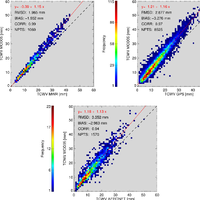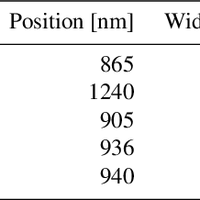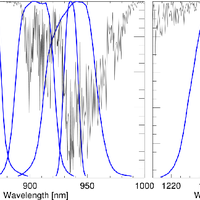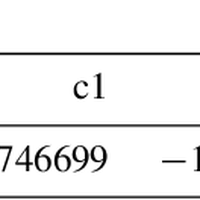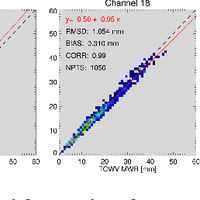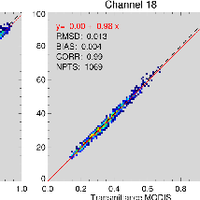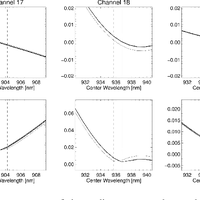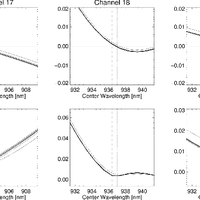Abstract
A retrieval of total column water vapour (TCWV) from MODIS (Moderate-resolution Imaging Spectroradiometer) measurements is presented. The algorithm is adapted from a retrieval for MERIS (Medium Resolution Imaging Spectrometer) from Lindstrot et al. (2012). It obtains the TCWV for cloud-free scenes above land at a spatial resolution of 1 km × 1 km and provides uncertainties on a pixel-by-pixel basis. The algorithm has been extended by introducing empirical correction coefficients for the transmittance calculation within the forward operator. With that, a wet bias of the MODIS algorithm against ARM microwave radiometer data has been eliminated. The validation against other ground-based measurements (GNSS water vapour stations, GUAN radiosondes, and AERONET sun photometers) on a global scale reveals a bias between -0.8 and -1.6 mm and root mean square deviations between 0.9 and 2 mm. This is an improvement in comparison to the operational TCWV Level 2 product (bias between -1.9 and -3.2 mm and root mean square deviations between 1.9 and 3.4 mm). The comparison to MERIS TCWV for an example overpass exposes a systematic dry bias.
Figures
Register to see more suggestions
Mendeley helps you to discover research relevant for your work.
Cite
CITATION STYLE
Diedrich, H., Preusker, R., Lindstrot, R., & Fischer, J. (2015). Retrieval of daytime total columnar water vapour from MODIS measurements over land surfaces. Atmospheric Measurement Techniques, 8(2), 823–836. https://doi.org/10.5194/amt-8-823-2015

